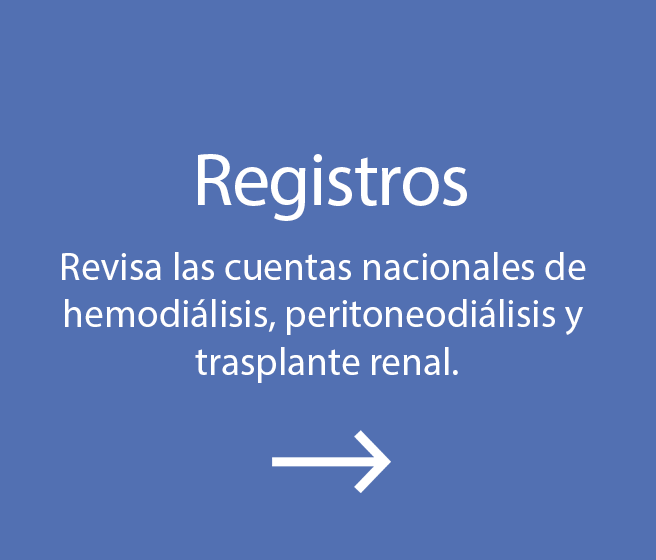Diciembre 2008
{phocadownload view=file|id=40|target=_blank|text=Ncpneph 2008 ronco A wearable artificial kidney}
• Combination therapy is the most effective option for severe lupus nephritis
Treatment of severe lupus nephritis generally involves monotherapy with cyclophosphamide, tacrolimus or mycophenolate mofetil, but remission rates remain low. Bao et al. have now shown that, compared with monotherapy, a combination of mycophenolate, tacrolimus and a corticosteroid leads to improved remission rates in patients with class V + IV (combined diffuse-proliferative and membranous) lupus nephritis. In this open-label study, 40 Chinese patients with proteinuria and class V + IV lupus nephritis, as defined by the International Society of Nephrology and the Renal Pathology Society, were randomly allocated to receive either combination therapy or intravenous cyclophosphamide. In the intention-to-treat analysis, 13 (65%) patients in the combination-therapy group had achieved complete remission by 9 months, compared with 3 (15%) patients in the cyclophosphamide group (P = 0.001).
Patients who received combination therapy were 6.47 times more likely to achieve complete remission than were those who received cyclophosphamide (P = 0.004). The rate of complete remission in the combination-therapy group at 6 months was also higher than that seen in previous studies of mycophenolate or tacrolimus monotherapy in this setting. No deaths occurred in either group, and most adverse events were less frequent in the combination therapy cohort. The authors attribute the reduced rate of adverse events in this cohort to the decreased drug dosages used compared with those used as monotherapy. This combination therapy might be especially useful for patients with severe lupus nephritis that is refractory to conventional monotherapy. Original article Bao H et al. (2008) Successful treatment of class V + IV lupus nephritis with multitarget therapy. J Am Soc Nephrol 19: 2001–2010
• Dialysis accelerates vascular calcification
Vascular calcification is highly prevalent in dialysis patients and arguably part of a complex process that contributes to their high rates of morbidity and mortality. A new article describes and quantifies the histology and calcification of vessels among children with and without kidney disease. Shroff et al. compared medium-sized muscular arteries routinely removed at omentectomy during peritoneal dialysis catheter insertion or renal transplantation in 34 patients with chronic kidney disease (CKD) with mesenteric arteries removed at planned intra-abdominal surgery in six diseasefree age-matched control patients without underlying comorbidity. Detailed histology and immunohistochemistry were performed. The load of calcium within vessels was significantly elevated in patients with CKD both on and not yet on dialysis (Figure).
Vessels from patients with CKD not yet on dialysis were histologically intact; those from patients receiving dialysis showed evidence of extensive vascular smooth muscle cell loss, likely due to apoptosis. These vessels also showed increased alkaline phosphatase reactivity and Runx2 and osterix expression, indicating vascular smooth muscle cell osteogenic transformation. The deposition of fetuin-A and matrix Gla-protein was increased in the vessels of dialysis patients and preceded overt calcification. Hydroxyapatite nanocrystals were present on electron microscopy within vesicles from damaged vascular smooth muscle cells, suggesting a role in initiating calcification. This study confirms the presence of vascular calcification that precedes dialysis among children with CKD. Apoptosis of vascular smooth muscle cells is a prominent component of the histology of vascular calcification among children on dialysis. Whether this factor contributes to the initiation of calcification or is an effect of the calcification needs to be further examined. Regardless, this finding could help identify new therapeutic strategies that target vascular calcification, likely a major contributor to morbidity and mortality among persons with kidney disease. (Circulation 2008; 118: 1748–1757). Calcium accumulation in the vessel wall begins before dialysis, and factors specific to the dialysis milieu trigger accelerated calcification.
Allopurinol reduces blood pressure in adolescents with mild hypertension
Hyperuricemia has been shown to predict the development of hypertension but is not considered to be a true risk factor for hypertension. A recent randomized, placebo-controlled, crossover study investigated whether decreasing uric acid levels with allopurinol, a xanthine oxidase inhibitor, lowers blood pressure in adolescents with recently diagnosed mild essential hypertension. In total, 30 individuals aged 11–17 years with stage 1 hypertension and a serum uric acid level ≥357 μmol/l, were randomly allocated to receive treatment with either allopurinol 200 mg twice daily or placebo twice daily, for 4 weeks.
After a 2-week washout period, individuals crossed over to the other treatment group for 4 weeks. As expected, uric acid levels decreased during allopurinol treatment, but not during placebo treatment. Casual (in-office) systolic blood pressure decreased significantly more during allopurinol treatment than with placebo (–6.9 mmHg vs –2.0 mmHg; P = 0.009), as did casual diastolic blood pressure (–5.1 mmHg vs –2.4 mmHg; P = 0.05). Significant decreases in 24-h ambulatory blood pressures were seen with allopurinol but not with placebo (systolic –6.3 mmHg vs +0.8 mmHg; P = 0.001, and diastolic –4.6 mmHg vs –0.3 mmHg; P = 0.004). Normal blood pressure (by casual and ambulatory criteria) was achieved by 20 (67%) patients during allopurinol treatment but by only 1 (3%) patient during placebo treatment. The order in which patients received treatments did not influence the results. These preliminary findings indicate that elevated serum uric acid may be a causal factor in newly diagnosed hypertension in some populations. Allopurinol is not indicated for treatment of hypertension, however, because of potential adverse effects. Original article Feig DI et al. (2008) Effect of allopurinol on blood pressure of adolescents with newly diagnosed essential hypertension: a randomized trial. JAMA 300: 924–932



